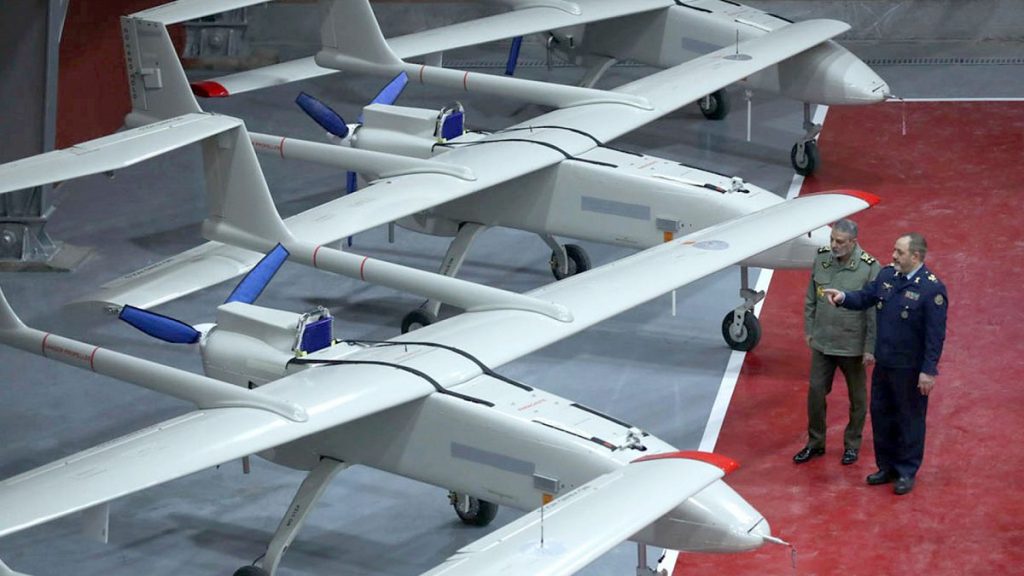Iran’s recent announcement of adding 1,000 “strategic drones” to its military fleet has significantly heightened regional tensions, particularly with the United States and Israel. This move comes amidst escalating concerns regarding a potential attack on Iran’s nuclear facilities, adding another layer of complexity to the already volatile geopolitical landscape. The showcased drones, displayed in an undisclosed location during a military review attended by high-ranking officials, reportedly possess advanced capabilities, including stealth technology, anti-fortification features, and an extended operational range exceeding 2,000 kilometers. These enhancements raise substantial questions about Iran’s strategic intentions and the potential implications for regional stability.
The integration of these sophisticated drones into Iran’s military arsenal represents a significant advancement in its unmanned aerial vehicle (UAV) program. The claimed capabilities, such as low radar cross-sections and autonomous flight, suggest a substantial leap in technological prowess. The ability to penetrate defense layers undetected and operate independently over long distances significantly enhances Iran’s reconnaissance and strike capabilities. This development poses a considerable challenge to regional adversaries and underscores Iran’s growing military strength.
The timing of this announcement, coinciding with heightened concerns over the safety of Iran’s nuclear facilities, cannot be overlooked. Recent air defense drills conducted near the Natanz and Fordo nuclear sites indicate Iran’s heightened state of alert and its preparedness to defend against potential attacks. This demonstration of military readiness, coupled with the addition of a substantial number of advanced drones, sends a clear message of deterrence to potential aggressors. It underscores Iran’s resolve to protect its nuclear program and its growing ability to project power in the region.
The drones’ purported ability to overcome fortifications poses a significant threat to hardened targets, including military installations and critical infrastructure. This capability raises concerns about the potential for escalating regional conflicts and the possibility of these drones being used in offensive operations. The combination of stealth, extended range, and high destructive power significantly amplifies the threat posed by these UAVs, potentially altering the balance of power in the region and adding a new dimension to existing tensions.
The autonomous flight capability further enhances the drones’ effectiveness in reconnaissance and border monitoring. By operating independently, these UAVs can cover vast distances and gather intelligence without the limitations of human pilots. This capability significantly expands Iran’s surveillance reach and provides valuable information for strategic planning and military operations. The increased autonomy also enhances the drones’ combat capabilities, allowing for more flexible and responsive deployments in various operational scenarios.
The implications of this drone deployment extend beyond the immediate military context. The demonstration of advanced technological capabilities serves as a powerful symbol of Iran’s growing military strength and its determination to assert its influence in the region. This move adds another layer to the complex web of regional rivalries and could trigger a further arms race, increasing instability and the potential for conflict. The international community must closely monitor these developments and engage in diplomatic efforts to de-escalate tensions and prevent further escalation. The proliferation of advanced drone technology raises crucial questions about regional security and the need for international cooperation to address the potential risks.














